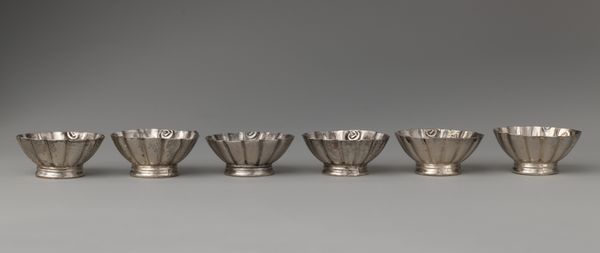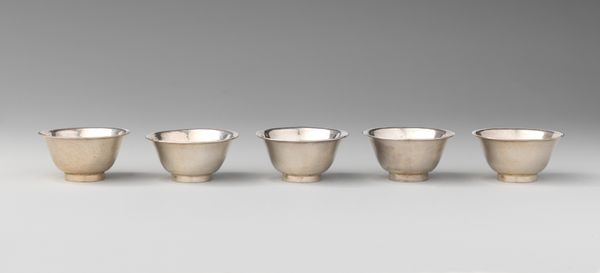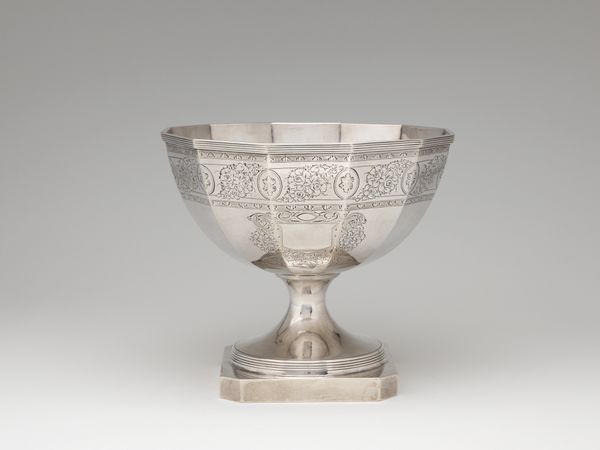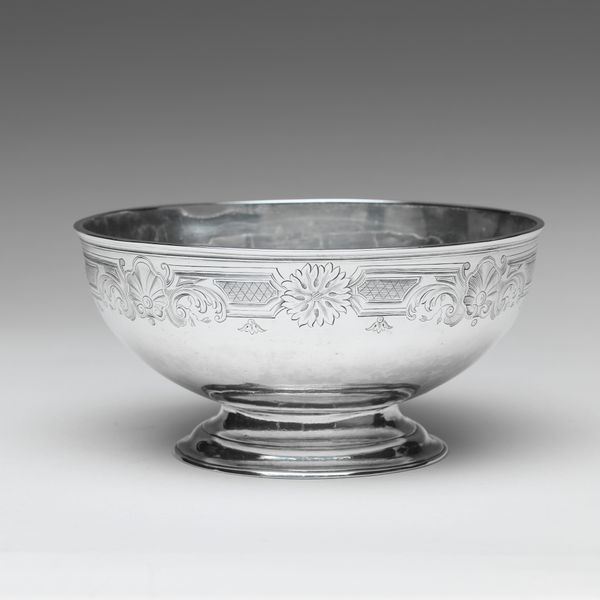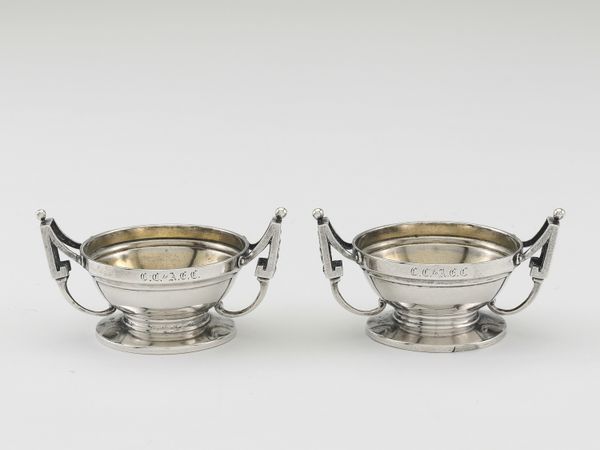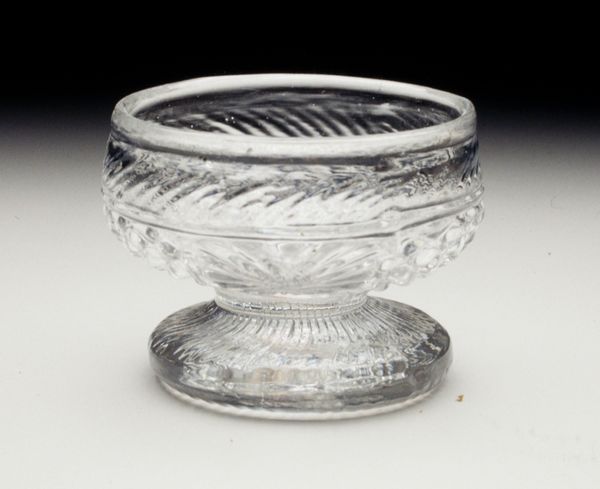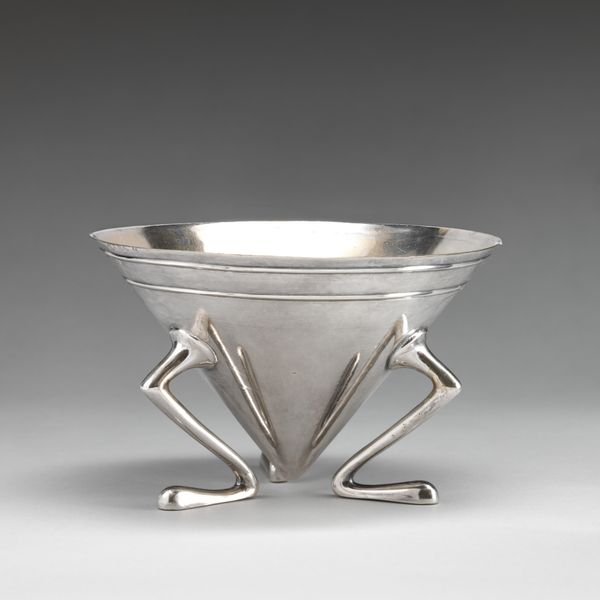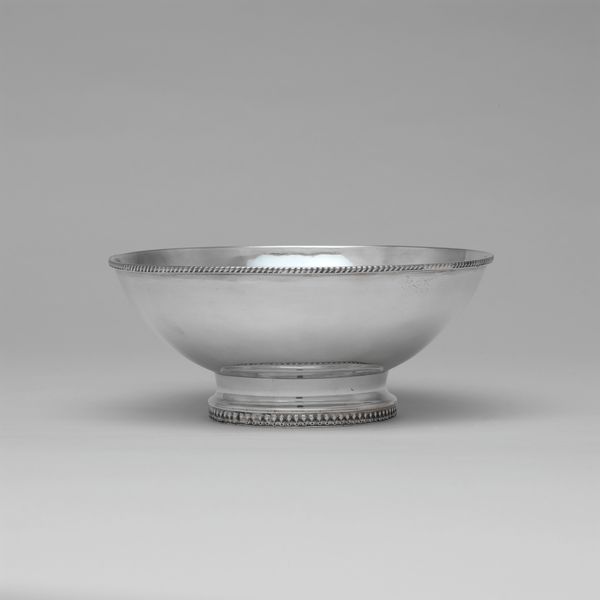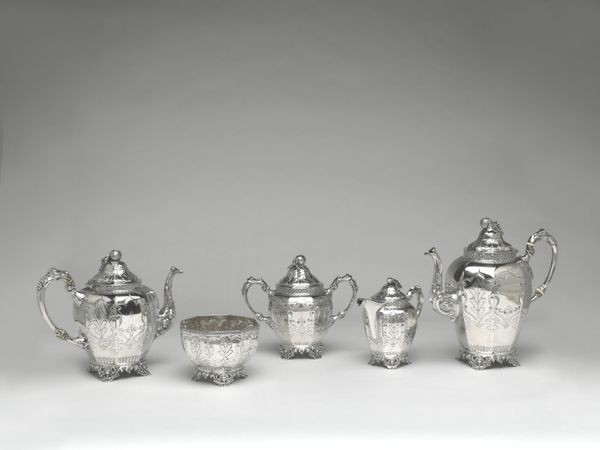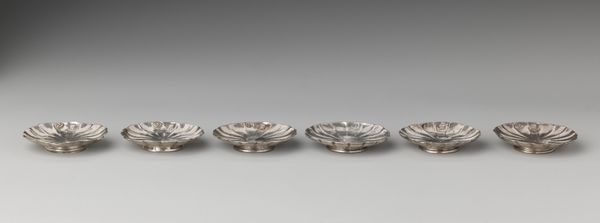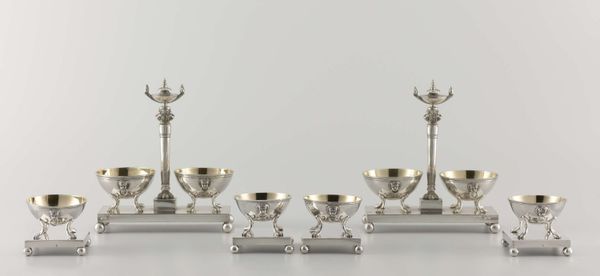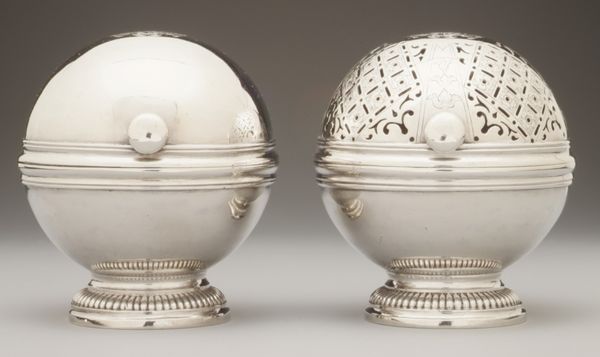
photography, glass
#
photography
#
glass
#
product photography
#
realism
Dimensions: 5 1/4 x 3 1/4 x 3 1/4 in. (13.34 x 8.26 x 8.26 cm)
Copyright: Public Domain
Curator: Ah, I am struck. Five crystal glasses, captured in a photograph that seems to hover, ghostly and precise, between object and art. It’s a realist photograph from around 1830 titled "Water glass," currently held at the Minneapolis Institute of Art. What catches your eye? Editor: Well, immediately I'm considering ideas of excess. The clarity, the precision… almost feels like a clinical study of privilege. Five glasses? Whose thirst is *that* excessive? Curator: Perhaps not simply thirst, but ritual? These glasses, each unique but united by this elaborate diamond cutting, whisper of dinners, celebrations... I almost taste the ghost of a sweet sherry lingering in the air. They represent something about civility in that era. Editor: True, but civility has always been unevenly distributed. How might this “water glass” actually be reflective of control and resource monopolization? The labour involved in producing such luxury—the material extraction, the glassblowing—speaks to structures of class and colonial exploitation in the 19th century. I wonder who was deprived of access to something so basic, even as others luxuriated in these exquisitely crafted containers. Curator: I do tend to forget that the dance of light across these facets required a choreography of human effort... it certainly pulls my head away from that sparkling dance, the inherent cost. What appears simply beautiful gains an edge of discomfort. But is there no inherent artistry, a craftsman's vision, separate from socio-economic reading? Editor: The artistry is undeniable, but inseparable from that history, I’m afraid. Think about photography's simultaneous emergence as a means of documentation and aesthetic manipulation. This photograph and glass-making exemplify industrial capitalism's push for perfection, standardization and consumer culture. The light bends around this object of leisure so compellingly. We begin to almost overlook how labor intensive those crystal cuts would've been. Curator: Indeed. They’re beautiful, yes, almost impossibly delicate, but that perceived fragility obscures a past of brutal inequalities and human work. Editor: Exactly. Appreciating beauty can never mean excusing the context that brings it into existence. A glass is never *just* a glass, is it?
Comments
No comments
Be the first to comment and join the conversation on the ultimate creative platform.
